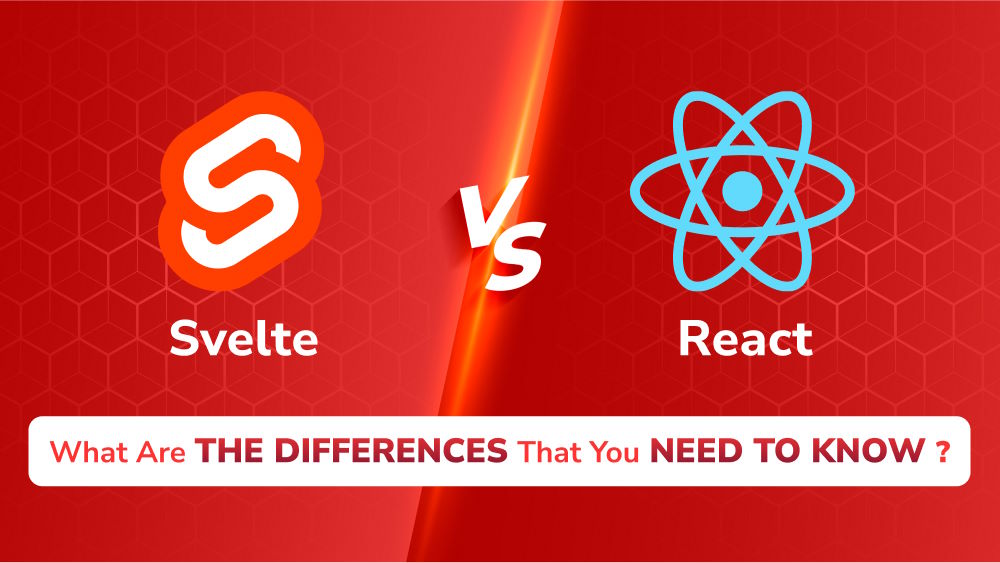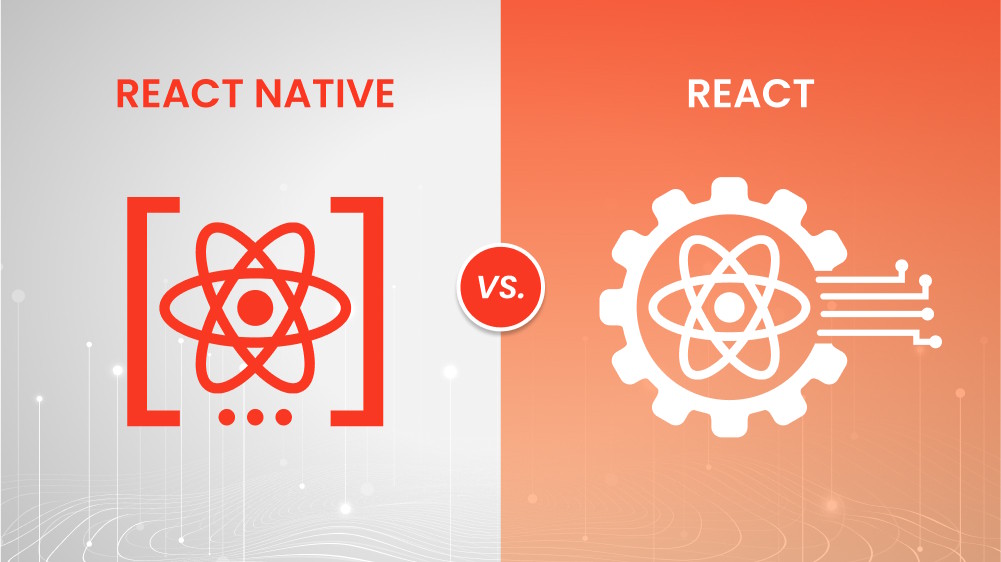
Vue vs. React: What Vue Developers Love About React and Vice Versa!
The ongoing controversy between Vue and React defines the web development environment of our current times. Multiple articles analyze the behavior of these frameworks together with their coding structures and their core ecosystem, which creates an impression of firm competition. But what if we shifted our perspective? What if we explored the silent admirations, the features and philosophies that developers deeply entrenched in one framework secretly appreciate about the other?

Content Map
More chaptersVue and React frameworks both enable developers to build dynamic user interfaces, but they have distinct methods to achieve this outcome. Vue wins praise through simple features and easy integration, and React stands out through its superior scalability together with top-class performance. The statistics from May 2025 indicate React powers 5.2% of all sites alongside a 6.4% market share of JavaScript libraries, yet Vue.js reaches 0.8% website usage and holds a 1.0% market share statistic. The widespread adoption of React has not stopped Vue from making headway because developers value its user-friendly API together with its reactive data binding features.
This article delves into these fascinating cross-framework admirations. We’ll explore what aspects of React genuinely resonate with Vue developers – perhaps the power of its vast ecosystem or its explicit control over complex architectures. Conversely, we’ll uncover what React developers find appealing about Vue – maybe it’s its elegant syntax, its “batteries-included” convenience, or its perceived smoother learning trajectory. Our examination of mutual framework appreciations enables us to transcend normal feature comparisons by developing advanced insights about how each framework substantially contributes to web development practice. Let’s explore the surprising common ground in the Vue vs. React landscape!
Why Are Vue and React Often Positioned as Rivals?
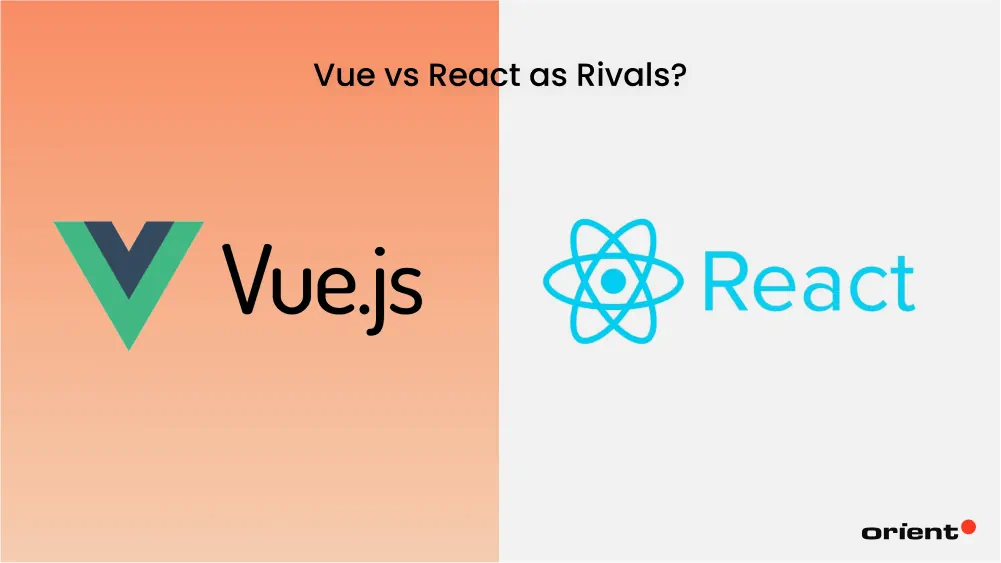
The rivalry between Vue and React in frontend development emerges because they have shared fundamental purposes, yet follow different design philosophies. Both tools enable developers to create dynamic interfaces through component development for single-page applications (SPAs) and advanced web applications. The common goal between the two frameworks leads to competition for developers’ adoption of projects and acquisition of talent in the same developmental marketplace.
This rivalry intensifies due to their different complementary approaches to core development principles. React, implemented by Facebook (now Meta), adopts an explicit development style with verbose code that achieves unidirectional data movement and immutable data through its virtual DOM implementations. The unbridled nature of the React framework allows developers to select the state management library, either Redux or Zustand, and use React Router for routing while leveraging tools available in its mature, well-established ecosystem. The increased freedom developers experience from these options adds difficulties to project development due to greater choices and required configurations during setup.
In contrast, web developer Evan You created Vue as an application featuring convention-over-configuration design principles. Vue.js facilitates quick setup through its integrated solution set, featuring official routing support from Vue Router and official state management features from Pinia or Vuex, thereby benefiting both low-mid-size project teams and those focused on rapid development. This difference in philosophy – explicit flexibility versus integrated convention – naturally creates distinct camps of developers who often advocate for their preferred approach as inherently superior.
The establishment and development history of these platforms adds weight to their rival status. Its initial popularity resulted from the major tech firm backing React and its adoption among large-scale applications. Vue.js became available after React, yet maintained a higher lightweight capacity that drew developers who wanted a flexible framework while simplifying their learning process. Through its “challenger” or “more accessible” approaches, this positioning creates clear benchmarks against the established leader. Active community engagement in the framework debates about performance capabilities, syntax, and ecosystem excellence helps strengthen the perceived competitive dynamics between these frameworks. These discussions help both frameworks advance while maintaining the constant perception of direct competition in front-end framework leadership.
What Vue Developers Admire about React
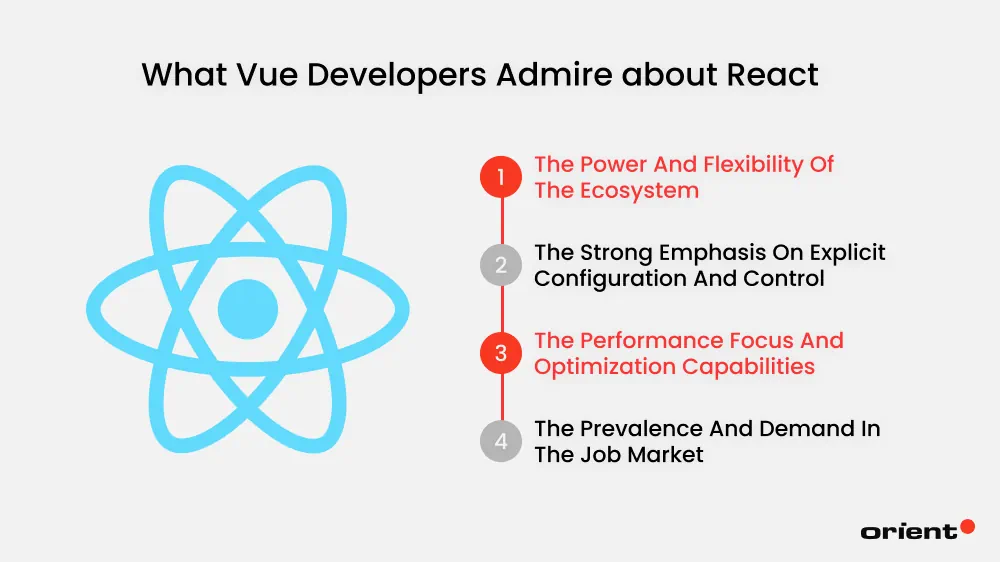
Although Vue and React are generally presented as rivals, numerous Vue developers acknowledge the particular features of React that make it a potent instrument in front-end engineering.
The Power and Flexibility of the Ecosystem
React boasts one of the biggest and most mature ecosystems of all front-end frameworks. Used for state management, UI components, performance, or testing, React provides unique libraries that cover almost any development need. Frameworks such as Redux, Zustand, and Recoil offer great state management solutions, and UI libraries such as Material-UI, Chakra UI, and Tailwind UI significantly simplify the process for building user interface components.
Vue developers very much appreciate the impression that React’s landscape feels boundless, with beautifully supported libraries that provide solutions to almost any problem. Some developers even claim that React’s ecosystem makes development easy because solutions already exist for common challenges.
“Working on a large Vue project, I sometimes wish we had as many state management solutions as React has. Vue has Vuex and Pinia, which are great, but React developers appear to have multiple powerful choices for various situations”. A Vue developer looking back at React’s ecosystem.
Moreover, frameworks such as Next.js and Remix extend React’s functionality by merging features such as server-side rendering (SSR) and static site generation (SSG) organically. Other Vue developers respect the pace of innovation in the React ecosystem and how people from the community are always eager to find new methods of growing development workflows.
The Strong Emphasis on Explicit Configuration and Control
That said, if Vue is praised for its more “batteries-included” tendency, offering official and nicely integrated solutions for the core functionality such as routing (via Vue Router) and state management (either via Pinia or, historically, the more mature Vuex), then some of the Vue developers find a distinct kind of pleasure in the more vanilla way of building things in React, with an emphasis on the more explicit approach to configuration.
This aspect of React can be very attractive for the developers who value the fine-grained control over the architecture of their application and prefer to make conscious decisions about every possible element of their technology stack. React does not impose default solutions, so it offers a highly customized setup that permits teams to choose the libraries and tools that perfectly meet their respective project needs, performance requirements, and team expertise.
To understand this “explicit configuration”, take the example of how routing is normally performed:
Vue (More Implicit Configuration):
// main.js
import { createApp } from 'vue';
import App from './App.vue';
import { createRouter, createWebHistory } from 'vue-router';
import HomePage from './components/HomePage.vue';
import AboutPage from './components/AboutPage.vue';
const routes = [
{ path: '/', component: HomePage },
{ path: '/about', component: AboutPage },
];
const router = createRouter({
history: createWebHistory(),
routes,
});
const app = createApp(App);
app.use(router); // Vue Router is integrated as a plugin
app.mount('#app');In Vue, you install the official vue-router package and subsequently incorporate it into your application instance using the app.use(router) syntax. All underlying integration is handled by Vue, allowing you to access router capabilities through conventions, such as $router and <router-link>, in your components. The configuration is fairly straightforward, and it merely assumes that there is a connection made between the router and the application by the implicit plugin system.
React (More Explicit Configuration):
// App.js
import React from 'react';
import { BrowserRouter as Router, Routes, Route, Link } from 'react-router-dom';
import HomePage from './components/HomePage';
import AboutPage from './components/AboutPage';
function App() {
return (
{/* Explicitly wrapping the application with the Router */}
<Router>
<div>
<nav>
<ul>
<li>
{/* Explicitly using the Link component for navigation */}
<Link to="/">Home</Link>
</li>
<li>
<Link to="/about">About</Link>
</li>
</ul>
</nav>
{/* Explicitly defining the routes */}
<Routes>
{/* Explicitly mapping paths to components */}
<Route path="/" element={<HomePage />} />
<Route path="/about" element={<AboutPage />} />
</Routes>
</div>
</Router>
);
}
export default App;In React, you explicitly import components, such as BrowserRouter, Routes, and Route from a routing library (specifically here, react-router-dom). Then, you explicitly organize your application’s routing logic with the help of these components. The <Router> component explicitly allows its children to be routed, <Link> components are explicitly used, and <Routes>/<Route> are also explicitly used to associate URL routes to components.
This contrast highlights the difference. Vue liberates users from a lot of the underlying setup via its plugin system, which can be a much more unified and often faster experience to getting started. In contrast, React’s approach requires the developers to make explicit choices and configurations of these core functionalities, allowing for greater control and transparency regarding how these bits are woven into the application. Some Vue developers like this explicitness in React, especially in complex apps where the desire is to have a more granular understanding and customization of the underlying infrastructure.
The Performance Focus and Optimization Capabilities
React’s approaches to performance, especially its Virtual DOM, are often mentioned as positives in large-scale applications. Although both Vue and React use a virtual DOM, React’s render optimizations have made it the ideal option for use in applications where the UI is highly interactive.
React’s reconciliation process efficiently diffuses only the required components, hence avoiding unnecessary re-renders and increasing efficiency. Vue developers who work with resource-intensive, performance-critical applications recognize that React’s mastery of managing render cycles provides one of its many strengths for large enterprise-type projects.
Vue has advanced in performance, especially with Vue 3’s Composition API & better reactivity system, but the impression is that React has been making itself felt here longer & has better-tested optimization patterns.
The Prevalence and Demand in the Job Market
Another irrefutable advantage of React is its throne in the job market. React still occupies the largest portion of front-end job postings as of 2025, and big companies such as Meta, Netflix, Airbnb, and Uber, to mention but a few, are constantly seeking React developers. Vue developers who are career-minded notice the ubiquity of React in enterprise environments, which is an attractive skill to master.
This reality may convince some Vue developers to look at the wider career horizon and the wider pool of collaborators and mentors, which they are part of in the React ecosystem. Even if the focus of passion is on a particular framework, the developers are not ignorant of career growth and job security issues.
Now think of a Vue developer assigned with such a delicate task as to integrate a wildly esoteric, third-party library for real-time collaborative editing and presented with an exalted, well-documented React implementation but a barely exposed or community-based Vue wrapper. In this case, the Vue developer may wonder, “I wish Vue had a mature ecosystem of React at this particular point. With its strong React library and its large community base to support the integration, this integration will be much smoother and more reliable”. This serves as a concrete case where the width and the height of the React universe provide a real benefit that the Vue developers can grasp immediately.
What React Developers Love About Vue
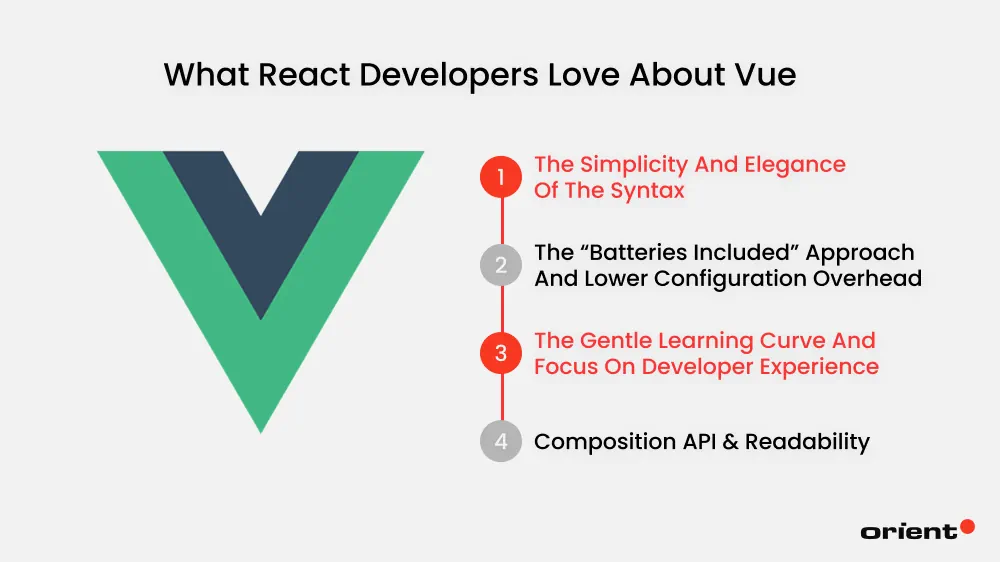
The Simplicity and Elegance of the Syntax
One of the first things React developers often appreciate about Vue is its intuitive template syntax, which makes it incredibly approachable. Unlike React’s JSX, Vue utilizes a template system that is HTML-based, which appeals to many developers, and they can cleanly separate concerns within a single file: HTML for structure, CSS for styling, and JavaScript frameworks for logic. This organization reduces cognitive load and allows for faster development since there is no need to switch between different paradigms from time to time. The single-file component structure (.vue files) also makes collaboration easier across the teams, allowing developers of varying skills to collaborate without pushing each other to develop increasingly complex patterns.
Apart from being readable, Vue’s template syntax has strong directives (v-if, v-for, v-bind, etc.) that make common operations such as rendering based on condition and dynamically putting attributes simpler without using long JavaScript functions. This expressiveness enables developers to write more declarative and succinct code with increased productivity and lowers the entry barrier for newcomers.
The “Batteries Included” Approach and Lower Configuration Overhead
One of Vue’s best practices is its ecosystem, which provides solutions, including for routing and state management, that support developers in launching them into production with little configuration. Vue Router, for instance, offers an intuitive API for navigation, including transition effects and dynamic routing. On the other hand, developers working with React must choose between various third-party routing libraries, including React Router, and configure them themselves, leaving them at the mercy of that library, which again can cause compatibility issues and overcomplicate everything.
Vue’s state management is also easier. While React developers often argue whether to use Redux, Zustand, or something else, Vue provides official state management libraries of its own: Vuex and Pinia, which seamlessly fit into the framework. In particular, Pinia is widely praised for its simplicity, modular approach, and TypeScript support, which makes it fairly easy for developers to work with the application state with minimal boilerplate. The result? A framework that is filled with the developers’ confidence in its “just works” philosophy, thus reducing time spent on configuring and debugging dependencies.
The Gentle Learning Curve and Focus on Developer Experience
React is unquestionably strong, but its learning ramp can be steep, particularly to those new to JavaScript’s latest changes. Vue, however, favors a slow learning process. It is generally regarded as one of the best documents in the industry, with explanations that are easy to follow, working examples and a progressive philosophy that begins with initial concepts and progresses to complex features.
Vue’s flexibility also makes onboarding easier. Although developers need to understand the concepts of closures, side effects, and dependencies both early in React’s functional components and hooks, for Vue, newcomers can begin building with an options-based API (data, methods, computed, etc.) that is comfortable for the seasoned front-end developer. Developers can move over to Vue Composition API when they feel ready, making the transition more natural and towards modern best practices.
Composition API & Readability
Many React programmers switching to Vue notice similarities between the Composition API of Vue and React hooks very soon. Both of these encourage reusable logic, but Vue’s Composition API even takes this further by making logic in components more organizable and readable. Rather than sprinkling logic into various hooks within a React component, Vue allows developers to organize related functionality into distinct functions, which makes things more organized and maintainable.
The Composition API also solves key issues with React hooks, including the dependency arrays and unintended rerenders. Because Vue automatically binds reactivity without needing manual dependencies, developers can instead focus on cleaner logic code and not debug the performance because of bottlenecks. This well-structured, predictable process of development attracts React developers who would like to have code files that are maintainable with minimal chances of unknowable behavior.
Bridging the Gap: Learning from Each Other’s Strengths

The mutual admiration that Vue and React developers hold for aspects of the opposing framework isn’t merely a matter of polite acknowledgement; it actively contributes to positive evolution within both ecosystems. The recognition of a strength in one framework often serves as inspiration or a benchmark for improvement in the other, leading to a continuous cycle of innovation and refinement across the frontend landscape.
Cross-Pollination of Ecosystem Patterns and Architectural Concepts
For illustration, Vue.js demonstrates intensive adoption of the proven methodologies and experience from React. With the Vue community gearing toward adopting more agile state management platforms like Pinia, which provide a cleaner, more approachable look built on the successful libraries of React, this shows an effective willingness to implement lessons already being learned from the competitive state management field of React.
The same benefits extend to the development of scalable applications by building upon those strategies, such as server-side rendering and static site generation, as well as well-structured application architectures, which have been at the forefront of React’s Next.js and the Vue ecosystem through tools such as Nuxt.js. The prioritization of composable functions and organized component logic, particularly with the Composition API at the birth of Vue 3, resonates with the functional programming approach and plain component logic that has come to React through Hooks. This adoption allows Vue developers to address hard problems using patterns created for React.
Conversely, React has been spending more time improving the developer experience, which has been a strong point of Vue. Development of tools such as Create React App to streamline project setups, improvements to error message delivery and debugging support, and a stronger commitment to adhering to clear practice and best practice advice in React’s official documentation are all examples of efforts to make React’s learning and configuration easier, as traditionally it has been more complicated than its state-of-the-art rivaling technologies.
Similar to the ease of styling found in Vue single-file components, popular CSS frameworks of today, such as Tailwind CSS, which are popular among React developers due to their inline and declarative styling, are all part of this movement towards simplicity of styling. Also, the advent of React Server Components aimed at simplifying data fetching processes and prefetching and boosting initial load’s performance is an indication of compensations for the challenges associated with the asynchronous data management that Vue solves through the means of such integrated features as
Concrete Examples of Cross-Pollinated Libraries and Concepts
There are numerous observable pieces of evidence of how these communities have gained as a result of sharing ideas. It is not just React’s strong point; Vue does not lose out from the adoption of the Virtual DOM, which initially was part of React’s forte. Although the approaches they use in this regard vary in how they are implemented, being a shared benefit, they have a deep interest in a highly effective process for mapping updates from a lightweight, in-memory model to the DOM. Consistent with refinement and iteration, the essential postulate of component-based architecture is continually improved by both communities to form complex, reusable, clean UI pieces.
Although point-to-point transfers of libraries are rare, the facilitating philosophies and API patterns of popular tools in one system often inspire the development of similar solutions in a distant system. The ideas behind Flux and Redux in React have, without a doubt, shaped the emergence of state management libraries in Vue, like Vuex and Pinia. Analogously, the ease of use of Vue’s syntax and modular single-file component design has most likely motivated React to rethink how it can make development more intuitive and streamlined. The appearance of non-styled ‘headless’ UI libraries that provide maximum flexibility is observable in both ecosystems, which is a clear collective favor towards flexible and accessible UI components.
A Future of Mutual Respect between React vs. Vue

There is a lot of talk about Vue.js vs. React.js, which usually carries on debating their features and aims to establish unequivocally which of the frameworks is superior. A better future for frontend developers lies in building an environment wherein both frameworks are valued and appreciated. Their strong points are celebrated, thus freeing them of the fight against each other, which has been going on for a long time.
Recognizing Complementary Strengths
Instead of competing Vue vs React, developers should welcome the distinctive advantages that Vue and React have to offer and understand the situations in which each is most suitable. React owes its benefits to its mature ecosystem, apparent control mechanisms, and cutting-edge performance tools, which make it suitable for large, complex projects and experienced JavaScript programmers. The wealth of its community and the presence of third-party libraries facilitate the ability of developers to cover very specific requirements.
On the other side, Vue’s intuitive syntax, extensive features out of the box, and focus on enhancing developer workflow make it a great choice for rapid launch, mid-complex single-page applications, and companies that want to establish fast getting-started times. Clearly, viewing these benefits allows developers to make tech choices based on project needs, not personal opinions and internet arguments. Adoption of this approach will enable developers to develop a more supportive environment in which the two frameworks get the room to grow independently of each other to cater to the web project’s individual needs and preferences.
Embracing Cross-Learning for Enhanced Development Skills
It would be very positive if the developers were forced to take a lesson from both Vue and React and combine their advantages. React developers can improve their component design by studying Vue’s Composition API, which allows better organization and reuse of logic in components. Understanding Vue’s template syntax can offer new insight into how to organize and render UI components, which may cause more declarative patterns to be put in JSX.
Similarly, authors of Vue can deepen their knowledge by working on React’s advanced approaches to manipulating the complex state or optimizing performance on a large scale. Digging into React with its explicit configuration model provides developers with an understanding of the inner workings of the system at a higher level of detail and the possibilities for application organization flexible enough for its developers. Transformation of views and synthesis of the best practices from various frameworks enables developers to build a wider skill set, thus making them more flexible and successful in addressing different development challenges. This perspective blending further enables a greater understanding of the frontend concepts, and it catalyzes innovation in any stage of development.
Partnering for Expertise Across the Spectrum
If your organization seeks to explore the benefits of both Vue.js and React.js, then working with a firm of developers experienced in these frameworks could give you a considerable competitive advantage.
Orient Software is a valuable accomplice for tapping into the influences of Vue.js and React.js since we have consistently provided the cream of the crop outputs in the frameworks. With Vue.js and React.js experience, we help our clients make strategic decisions for their projects with the best performance, scalability, and maintainability for each of the businesses’ needs. Capitalizing on our proficiency in Vue and React, Orient Software provides rapid prototyping, robust enterprise development, and integrated component solutions over a range of frameworks, showcasing adaptability and technical depth on today’s front end. Working together with a company that actively supports both Vue and React helps businesses use their advantages and provide more sophisticated and efficient software products.




